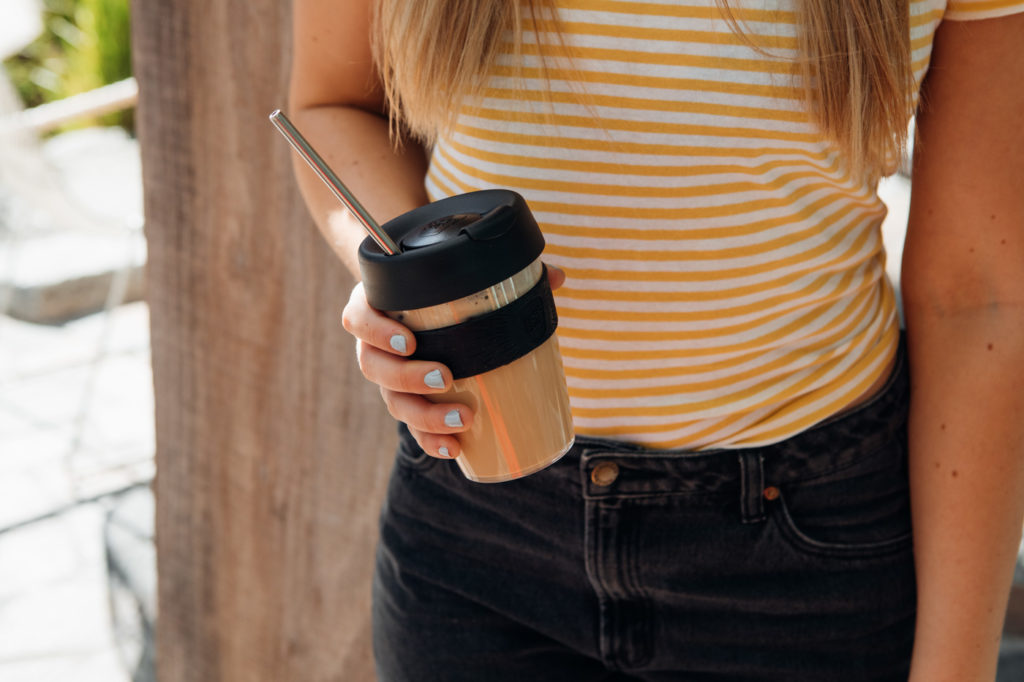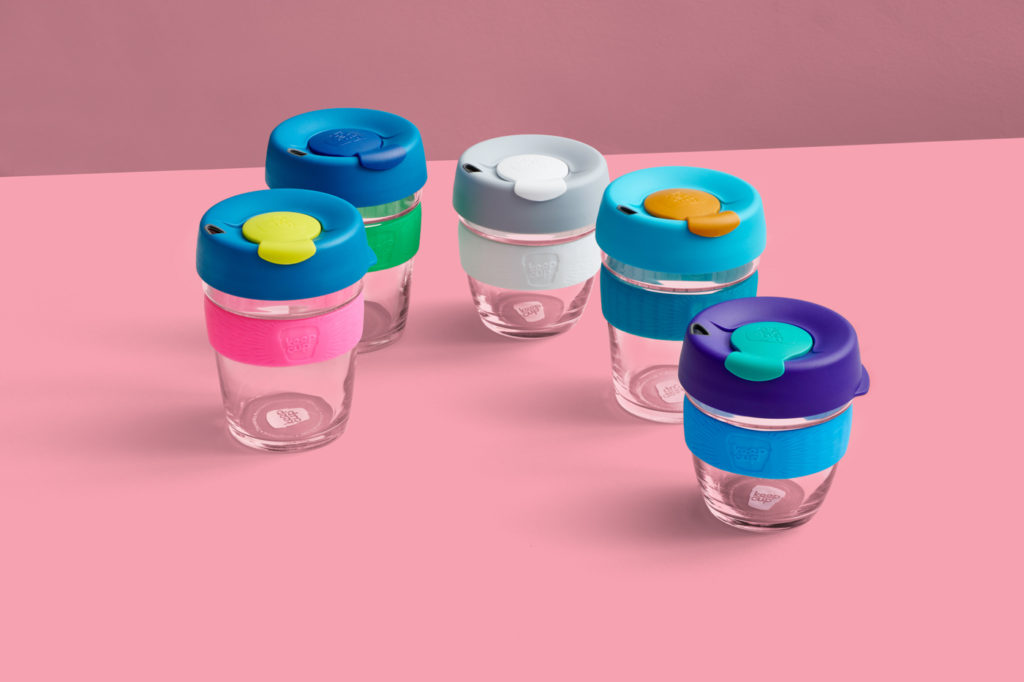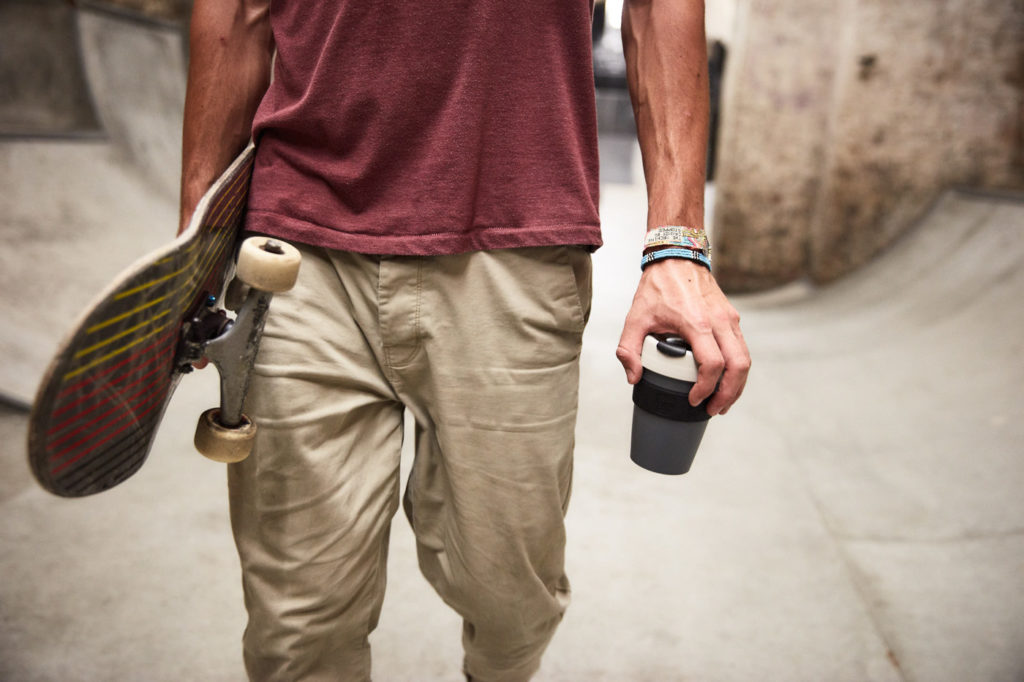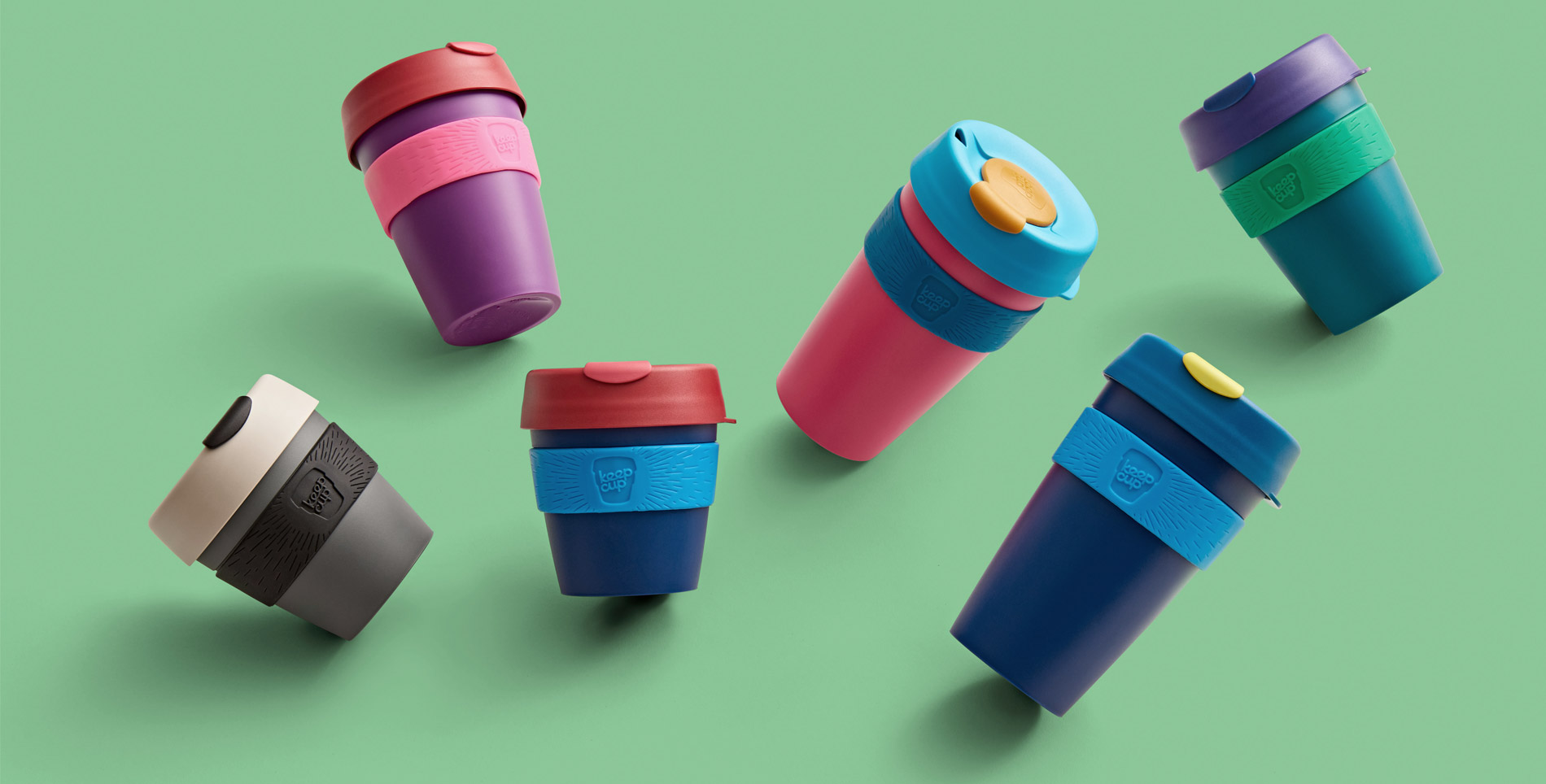
This story can also be found in our inaugural issue of Life & Thyme Post, our limited edition newspaper for Life & Thyme members.
In New England, a sea of styrofoam-wrapped Dunkin’ Donuts iced regulars with garish orange straws fill the platforms of the Boston T. In Los Angeles, lattes in hip stainless steel travel mugs glimmer in the sunshine during morning rush hour. In New York City, hot, black coffee is served from the street carts in blue and white greek-themed anthora cups that litter the streets. On a high school campus almost anywhere in the country, students arrive with oversized Starbucks cups, the green mermaid logo against stark white paper. American culture has developed into one where we drink our coffee customized, in large quantities, and almost always on the go. This phenomenon stands in contrast to the espresso tradition of quaint cafés lining city streets of France and Italy, the reverent routine of baristas in Osaka and Tokyo, or even the coffee farmers of Costa Rica brewing in their chorredores before a long day in the fields.
American coffee culture differs greatly from that of other countries, where the hand-pulled espresso laps daintily against ceramic cups, to be sipped and savored at a café table or minimalist coffee counter. In America, we see the coffee cup as a symbol of the modern professional—the marker of a person on the go. We assert that we have no time to spare to sit with a steamy cup, but must take our jolt of caffeine on the road (or down the sidewalk, or up the elevator) to face the day full-force.
The history of the to-go cup begins with the temperance movement, when teetotalers would travel with a water wagon trying to encourage the public drinking habits away from sipping beer all day. These wagons had a communal dipping cup attached from which the collective public could sip. In 1907, a Massachusetts lawyer Lawrence Luellen, invented the first disposable cup to stop the spread of germs from these communal cups. His invention, originally called the Health Kup, would develop into what we know as the dixie cup today.
The ubiquity of the disposable paper cup continued into the 1950s, when office vending machines dispensed a quick coffee in a paper cup for tired office workers in the post-WWII years. In 1952, the Pan American Coffee Bureau coined the term “coffee break.” This made official the practice that began in defense plants during the war, when tired workers needed a few minutes of rest and a caffeine jolt to make it through their long workdays. As part of this campaign, the bureau also introduced the slogan “Stay Alert, Stay Alive—Make It Coffee When You Drive.” With these campaigns, the American way of drinking coffee travelled decidedly out of the home and into the workplace.

Throughout the 1950s and ‘60s, America suburbanized. People were taking their coffee on the road, literally. Commuter culture cemented the need for coffee to travel well, but there still wasn’t a reliable way to transport it. To-go cups were topped with peel-back lids, making drinking difficult on the go, and causing dangerous conditions for commuters sloshing hot coffee onto themselves through the tear-away tops. In 1964, 7-Elevens on Long Island became the first chain stores to offer to-go traveller cups. From there, commuter coffee culture proliferated as chain convenience stores across the country began to carry twenty-ounce behemoth to-go cups, usually as part of a loyalty discount “coffee club.” A 1989 New York Times article referred to this specific travel mug as a “plastic sloshproof wonder” for late-twentieth century commuters.
Two major developments in the 1980s changed the way global coffee drinkers would interact with the brew forever: the rise of Starbucks, and the invention of the Solo Traveller lid. Starbucks proliferated across America under the leadership of Howard Shultz in the 1980s and 1990s. As part of the expansion, Starbucks had to standardize their offerings for to-go cups and lids. The company chose the Solo Traveller, a lid designed specifically for drinking on the go. According to the 1984 patent, “in the preferred embodiment, the top wall of the lid has a recess formed in it adjacent the drinking opening to accommodate the upper lip [sic] of the user.” There would be no more tearing, pinching or peeling back plastic lids to get to coffee while walking or driving; the traveller lid was ergonomically designed to be sipped from while on the move.

Abigail Forsyth, co-founder of KeepCup, the world’s first barista standard reusable cup, started her career in cafés in the 1990s. She remembers the introduction of the traveller-style lid to the industry. “I still remember some of the lawyers going, ‘I feel like a baby drinking out of this cup, like it’s such a childish thing to do… drink out of a sippy cup.’” However, once Starbucks chose to provide that lid with their to-go coffee, the entire culture changed. The to-go cup became a status symbol, a marker of the successful young professional on the go, in touch with the trends, and well-caffeinated.
“Starbucks was sort of an aspirational behavior for us back then,” muses Forsyth. “It was made to look like a really sophisticated thing to do. If you wanted someone to appear like a busy professional, you put a laptop in one hand and a disposable cup in the other.” For almost thirty years, disposable coffee cups have been used to broadcast to the world your personal values, status and taste. Coffee sellers from Starbucks to tiny independent corner shops adopted their own branded disposable cups, mini billboards for their customers to carry out the door. It became standard for café-goers to receive a disposable paper cup and traveller lid, even if they drank their entire latte at a table inside their local café.
Forsyth and her brother, Jamie, co-founded KeepCup while working in cafés in Melbourne, Australia, because they witnessed first-hand the huge impact this disposable culture was having on the environment. “I personally saw how many disposable cups we went through as a business and thought, ‘This is so disgusting. You drink it for five minutes and you throw it in the bin. There must be a better way to do this,’” says Forsyth. She designed the first KeepCup in 2009 in order to offer a solution that would work for both the consumer and the barista making the coffee. “I wanted to make it look a lot like a disposable cup, so it wasn’t a huge step away in terms of its visual design. It had to be lightweight, had to be stackable, and had to be the same internal volumes as disposable cups. Because we worked behind the coffee machine we knew it needed to have a press-on lid to have speed of service behind the machine.” She shopped her sketches and her list of criteria to several industrial designers, most of whom didn’t understand the point of the endeavor—it’s just a cup, after all.

Now, reusable coffee cups are just one solution the café industry is employing to combat the overwhelming waste created by America’s addiction to disposable coffee cups. As to-go coffee culture developed to meet the increasingly fast-paced, mobile and wandering routines of American commuters, it turned into an issue of convenience over sustainability. Many coffee lovers are working to reverse that way of thinking, to preserve the planet and the farms that grow their beloved beans. Forsyth explains, “Especially the roasters that go to origin and see what’s happening on the coffee farms, it’s a circular world. You can’t create the problem at the end of the supply chain and try to solve it at the other.”
Bar Nine, an independent coffee shop in Culver City, California, has removed to-go cups all together. Instead, they offer takeaway coffee in reusable glass jars, and ask their guests to return and reuse. Zayde Naquib, the café’s owner, explains their method. “I’m generally of the philosophy to go above and beyond to give them that great experience, but there’s a really powerful thing every once and a while to be able to ask something of your guest. In this case to be able to give them this jar. We’ve not added a cost for it; it’s the honor system, and we would love if you can for you to bring it back next time.”
As coffee shops around the country develop similar programs or compostable takeaway options, and hundreds more offer discounts for customers who bring their own reusable mugs, sustainability has replaced convenience as a status symbol. Forsyth has seen the tide change drastically in the past decade. “People are coming to us saying, ‘I’m buying a KeepCup now. Not because I thought I needed one, but because I feel bad in a coffee shop now,’” she says. “The behavior is flipping to normal.”
To-go coffee culture is changing drastically once again. Americans are learning to slow down after decades of speeding up. The ritual coffee break is gaining popularity once again, rebranded from the post-war years as a welcome interlude from the onslaught of our digital culture. Coffee connoisseurs insist brews taste better from a porcelain mug rather than a paper cup, sustainability aside. Now, people want to express themselves through the thoughtful choice of their reusable mug, rather than the logo of their favorite chain.







Our comments section is for members only.
Join today to gain exclusive access.